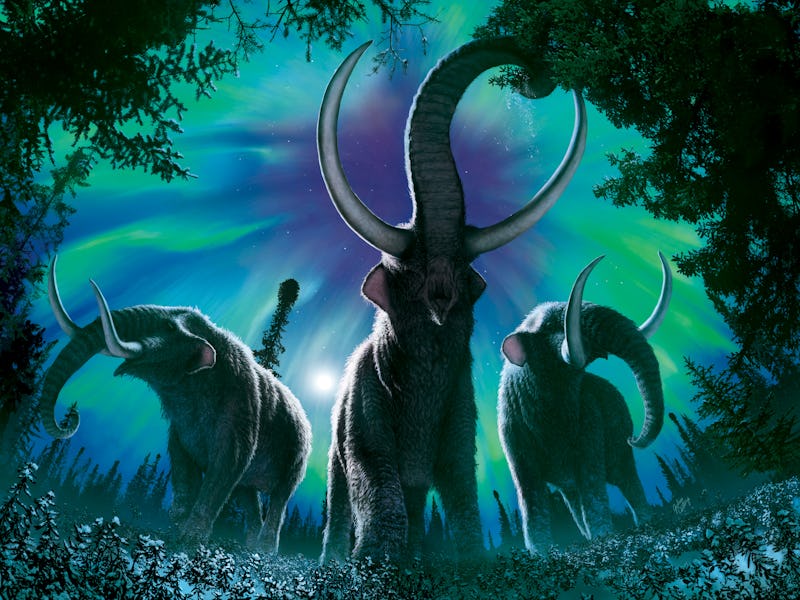Ancient mastodon genes reveal clues for how to protect living animals in danger
Extreme temperature change forced some ancient species to up and move — but the change of scene didn't necessarily do them any good.

For millions of years, elephant-like creatures called mastodons roamed across the Earth, before disappearing 100,000 years ago. Their sudden drop off the face of the planet puzzled scientists: Mastodons originated as early as 30 million years ago, so what caused this hardy species to go extinct after so long?
One major theory for the sudden nose-dive in populations of the distant mammoth cousins is that they were the victims of climate change. Now, new genetic data reveal how mastodons weathered the changing climate during the Pleistocene — and help explain why they didn't make it through.
At certain times during the Pleistocene, which lasted from 2.5 million years ago to about 12,000 years ago, temperatures on Earth were similar to what we experience today. And for North American mastodons, these temperature fluctuations acted like a spur: The animals migrated northward when things got too heated, according to a new study.
The findings illustrate how modern-day species may need to adapt — and move home — as the planet heats up.
The research was published Tuesday in the journal Nature Communications.
Mastodon fossil at the American Museum of Natural History.
Remains of these giant, tusked herbivores have been discovered across the globe, from Central America to the Arctic Circle, and we know the animals lived during both glacial and interglacial times during the Pleistocene. The old bones suggest the animals migrated — and now researchers think they know why.
To understand mastodon migration, researchers analyzed the mitochondrial genomes of 35 American mastodons. These preserved samples included fossilized bones and teeth.
The analysis reveal the mastodons moved to higher latitudes during interglacial periods of the Pleistocene. In fact, the animals moved northward repeatedly during that time, the analysis showed. Once they got there, however, they often didn't adapt to their new environs, particularly once freezing temperatures returned.
"These animals go north, and then probably die out, and then they go north again," said corresponding author Emil Karpinski, a researcher at McMaster University, in a video describing the study.
Besides the shifting climate conditions, a major threat to the mastodons as a result of migration is a shrunken gene pool. Mastodon populations in the north suffered from a small population, which led to inbreeding. That can cause an increase in genetic diseases, which are hard to breed out with tiny numbers.
Woolly mammoths, a distant relative of mastodons, experienced a similar demise, research shows. Isolated populations in the Arctic became inbred, causing them to have problems with neurological development, fertility, and sense of smell.
These patterns suggest troubled times ahead for modern animals dealing with climate change. Animals like moose and beavers are already rapidly inching northward to escape the effects of changing temperatures, Karpinski says. Small populations are likely to struggle as they leave their typical range; and that might put entire species at risk of dying out.
"If they're genetically impoverished — if they're very similar to one another — this could spell long-term consequences for any conservation patterns," Karpinski explains.
Abstract: Pleistocene glacial-interglacial cycles are correlated with dramatic temperature oscillations. Examining how species responded to these natural fluctuations can provide valuable insights into the impacts of present-day anthropogenic climate change. Here we present a phylogeographic study of the extinct American mastodon (Mammut americanum), based on 35 complete mitochondrial genomes. These data reveal the presence of multiple lineages within this species, including two distinct clades from eastern Beringia. Our molecular date estimates suggest that these clades arose at different times, supporting a pattern of repeated northern expansion and local extirpation in response to glacial cycling. Consistent with this hypothesis, we also note lower levels of genetic diversity among northern mastodons than in endemic clades south of the continental ice sheets. The results of our study highlight the complex relationships between population dispersals and climate change, and can provide testable hypotheses for extant species expected to experience substantial biogeographic impacts from rising temperatures.